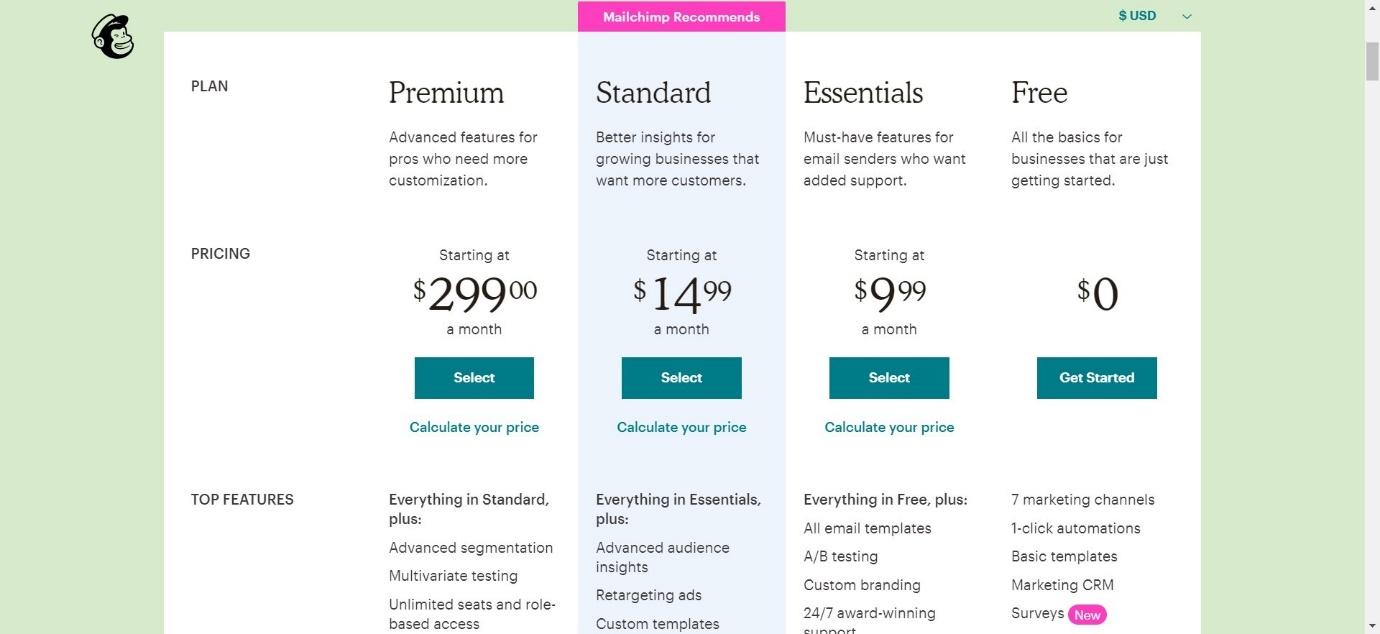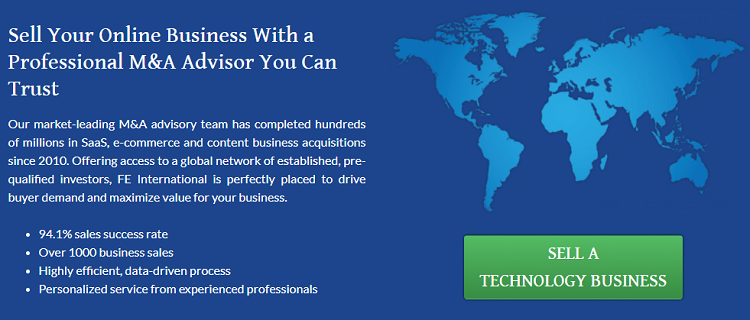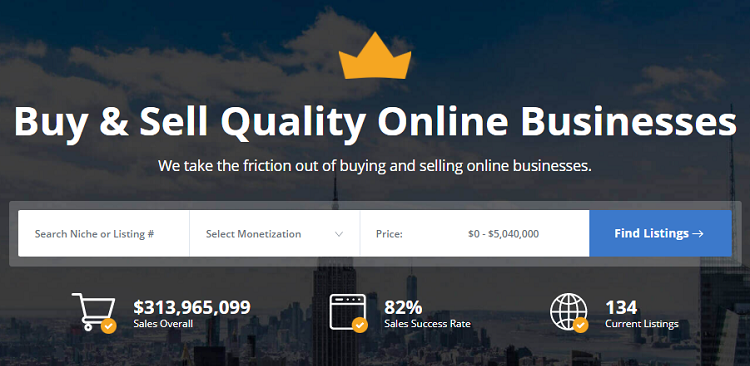Last Updated on August 28, 2025 by Ewen Finser
Selling a business is a decision that many entrepreneurs face at some point in their careers. There are several ways to find an interested buyer for your business.
Worldwide demand for eCommerce businesses will keep getting higher, with total revenues exceeding $6.09 trillion in 2024. With more and more people shopping online, and the market growing in regions like Southeast Asia and China, this sector is likely to be worth over $8 trillion in 2028.
If you are looking for a place to sell your eCommerce business, there are many ways to find potential buyers and achieve that hard-won exit.
Before you do that, you need to consider some factors, including the value of your company and the time it will take to find the right buyer. It’s important to factor in the latest eCommerce multiples and take into consideration whether tariffs are impacting your business or sector.
Also, it’s useful to decide whether you want to remain an active part of the business and whether you wish to sell privately or on the open market.
In this article, we cover what you need to do to make your eCommerce business sale-ready and review ways you can sell, including popular M&A platforms and brokers.
Things to do Before You Sell Your eCommerce Business
eCommerce businesses cover a wide range of categories. You might have a Shopify store, a Fulfilled by Amazon shop (Amazon FBA), a drop-shipping store, a direct-to-consumer (DTC), or a stand-alone eCommerce. These days, new types of stores are emerging too, like via TikTok, and new marketplace concepts.
All of the above fall into the eCommerce category, and all of them are attractive to buyers, provided you’ve got all of your ducks in a row before trying to sell it.

If you’ve built up a profitable and sustainable business over the years and are ready to sell it, there are many things you need to think about. 3 years is the ideal amount of time to start thinking about an exit; you’ll get a higher valuation if it’s been running for a minimum of 3 years.
The aim here is to make sure that your sale process is as smooth as possible. Before you get into the actual process of interacting with potential buyers, here are a few things you need to do.
1. Prepare Your eCommerce Store for Sale
Once you have put your e-commerce site for sale, the first thing that prospective buyers will do is visit your website. When selling your business, you need to make sure that it will appeal to its future owners. You will be passing on the work of running the site to someone else.
To help with this, keep the site clutter-free and straightforward. Make navigation easy by sticking to a standard format, and maintain products within two clicks from the homepage. In short, simplicity is vital.
2. Update Your Inventory Records
It is normal to have some products go out of stock in your business. When this happens, you will need to update your records accordingly. If you want to sell your e-commerce site successfully, you must ensure the products are in stock.
If your products are marked “out of stock” on nearly every page, customers and prospective buyers will lose interest and not buy from you. When you update your product images, make sure they are perfect. It would be best to optimize those that are still active, making sure the descriptions are clean and accurate.
3. Update Your Financial Records
Any prospective buyers will want to look at your financial records to get a picture of how the business is doing. Consider getting your finances right before you can secure a deal. A buyer who spots an error might not want to commit, which can be frustrating.
If you’ve been managing your accounts and tax returns personally, it might be time to bring in a professional accountant to do it for you. It will make your life easier and speed-up the sale process because an accountant can take care of what buyers need (which is days of work), and it will give potential buyers confidence that your accounts are in-order.
Having someone prepare your financials is quite normal. In addition to giving you their unbiased opinions, they can also connect you with financial advisors who could help with post-sale finances, or apply for an SBA-backed sellers loan, which will also help accelerate the sales process.
Some of the financial reports that prospective buyers will want to review, especially during due diligence include but aren’t limited to the following:
- Current cashflow (3-year projections might be needed too)
- Cash-on-hand, and receivables (should be in the same spreadsheet)
- Current bank statements might be asked for
- Profit & Loss account (P&L)
- Balance sheet, showing assets and liabilities
- Anything you’ve submitted to the Internal Revenue Service (IRS) over the last 3 years (if applicable)
4. Design Standard Operating Procedures (SOPs)
SOPs are like an instruction manual that shows how you undertake some tasks in your eCommerce business. Here, you may put instructions for tasks that you deem complicated for your prospective buyers.
An SOP is a valuable way to guide people outside of your company. It can be challenging to understand the processes for someone new to the business. But by writing out the steps in detail, you will make the process easier.
5. Update Your Customer Data
Now that you decided to sell your e-commerce business, you must be up to date with your customer data. Existing customer lists are essential to any business. It is a huge advantage to have a long list of contacts who are already familiar with your brand to the potential buyer.
If the new owner wants to use it, it will help them launch marketing campaigns and promotions. It is easier to sell to people who already know and like your brand.
It’s also useful to ensure that any customer data and databases are compliant with data protection legislation, especially if you’ve got customers in other regions, like Europe or Asia. Make sure that any databases are as secure as possible.
6. Ensure That Any Employee, Contractor, or Supplier Contracts are Locked-in Post-sale
Any success you may have enjoyed in running your e-commerce business is partly due to the good relationships with your suppliers. It is crucial to inform them of your intention to sell the business.
To protect your prospective buyer, have the suppliers make a written commitment that your current business arrangements will remain even after you exit the scene. Doing so will help the buyer not get caught in a scenario where the supplier increases the prices, affecting their profit margins.
7. Consult With a Valuation Expert
After doing all the above tasks and having your business processes running smoothly, it is time to know what your business is worth. Most business people think they have a good idea of how much their business is worth, which is okay.
Quoting an unjustifiably high valuation could risk turning away prospective buyers, while a low one may leave you shortchanged.
To get a fair appraisal of your eCommerce website, you should work with a professional and independent valuation expert. Instead of guessing about the price, they will give you a ballpark estimate. This should always include a multiple of an amount, like Sellers’ Discretionary Earnings (SDE).
It is not guaranteed to be the final sale price, but it will provide you with a reasonable estimate. While doing the valuation, the expert will factor in some things, which include;
- Site traffic
- Sales, revenue, and profitability
- Financial records
- Age of your business
- Number of customers
- Intellectual property (IP)
- Any patents or trademarks
- State of technology used in the business
- Relationships with suppliers
- Any territorial exclusivity
- Market position vs. competitors
- Customer data (newsletter lists are very valuable)
- Social media profiles and follower numbers/engagement rates
- Whether the business can operate without you (e.g., are SOPs allowing it to function independently with staff or contractors)
- Any other assets listed for sale
8. Keep Your Business Running
This is perhaps the most important thing to do for your e-commerce business.
Some people may start neglecting the business with the anticipation that they will soon be selling it. You find that their commitment reduces drastically, with even the most basic of tasks being delayed or abandoned.
Indeed, you may soon be parting ways with your business, but it is crucial to give it your undivided attention all the same. This will ensure that all your records and processes will be up to date when the new buyer comes in, making the transition easier.
The process of selling can feel like a full-time job itself. Especially if you go the DIY approach, such as using an M&A platform and listing it yourself. You could find yourself dealing with dozens, if not hundreds, of potential buyers. It can be difficult to know who’s genuine from who isn’t. So, this is one of the reasons founders choose to work with M&A brokers like Quiet Light instead of using self-listed M&A platforms.
You may even have a change of heart about selling the business. In such a situation, imagine how you would feel having a backlog of things you did not do, hoping that you would sell and move on? Your total commitment is, therefore, vital to all parties involved in the sale process.
3 Ways To Value Your eCommerce Business

Various types of calculations can help determine the value of an e-commerce business. Each uses different factors to calculate worth, and some are better suited for certain situations than others.
These aren’t the only methods, but they are generally considered the best and most suitable for eCommerce operators.
Choose the one which is right for your business, depending on its needs. Below are a few methods you can use to get the value of your e-commerce business.
1. A Multiple of the Seller Discretionary Earnings (SDE)
This type of valuation factors your eCommerce business’s historical earnings, usually for a period of the past 12 months. In that period, the total net profit made is multiplied by a multiple that ranges from 1.5 to 10X to arrive at the business’s valuation.
The calculation is done as follows:
SDE x Multiple = Business Value
Let us assume that your business had a net profit (Sellers Discretionary Earnings) of $180,000 for the last 12 months. If we use a multiple of 2.5, it means your business is worth $450,000, as shown in the calculation below.
$180,000 x 2.5 = $450,000
SDE is a common way to determine the worth of an e-commerce business. You start by calculating the company’s operating profit and adding back potential expenses that a new owner might not incur, such as the owner’s compensation, personal expenses, and non-recurring or unrelated business items.
By understanding your subsidiary’s expenses and income, you can decide what to include in the sale and how to make your financials cleaner. A clean financial history will be more attractive to potential buyers and help you negotiate better terms.
In our experience, we always recommend the SDE method because this gives founders the highest possible exit value. Use your current annual revenue numbers X the number of years you’ve been in business to come to a ballpark figure.
2. Discounted Cash-flow Analysis
While this is not a standard method to value an e-commerce business, it is a crucial one all the same. A DCF analysis projects a business’ future value. It is a projection of a company’s value, adjusted for inflation and time. It is a measure of potential return on investment.
Estimating the worth of an e-commerce business using this method can be tricky. This analysis is best for traditional businesses with a stable history. e-commerce business sales fluctuate more, meaning this analysis may not be perfect for them. But it can still give an idea of what the company is worth in the future.
3. Precedent Sales Method
This valuation method uses the sale value of other similar businesses as points of reference. In such a situation, the valuation criteria for your business may be different from the one you want to compare it to, and it may not be relevant to your situation.
You need to identify the metrics used in such a transaction to come up with an accurate comparison.
Where to Sell Your e-Commerce Business
You can sell your e-commerce business through forums, classified websites, and other marketplaces. Below are some of the platforms and marketplaces that you can use.
Quiet Light Brokers (QLB)

Quiet Light is a brokerage staffed by entrepreneurs who truly understand the selling process — they’ve “been there, done that.”
Quiet Light is known for their commitment to radical honesty, even when it may not be in their own best interest. Their team has honed the craft of valuing and selling online businesses with the goal of maximizing exit value for their clients. They want to help you, even if it means giving you a list of things to tackle so that you can come back when you are ready to sell.
Thanks to their proven processes, extensive network of qualified buyers, and hands-on selling approach, they boast that 85% of deals close within 90 days.
While they function much like an online marketplace — with most listings available to browse online — every business is carefully vetted before going live. The one drawback is that they don’t publicly disclose their commission structure or fees, though it’s likely they’ll explain if asked directly.
Potential buyers are also carefully vetted, which means you’ll only ever be introduced to qualified, interested buyers, not time-wasters.
If you’re still unsure about selling or who to work with, Quiet Light offers a free, no-pressure consultation with one of their advisors. It’s a chance to find out what your business might be worth and whether now is the right time to sell.
Flippa

Flippa boasts over 100,000 completed deals since it was launched — an impressive figure, though it doesn’t disclose the total dollar value of those transactions.
It operates very much on a pay-to-play model: without investing in premium listings or add-ons, it’s difficult to get meaningful visibility in front of serious buyers.
For those looking to sell a business valued at $1 million or more, full M&A broker support is available — but it comes at a cost. Listings at this level are significantly more expensive compared to other M&A platforms. For example, selling a $1 million business over six months with the broker package would cost approximately $85,394 on this platform.
FE International

FE International is a company that specializes in M&A and deals in business sales from $50,000 to $5,000,000. They work with businesses from a variety of fields, such as SaaS, eCommerce, and content.
The company guides you through all the milestones to ensure that your transaction is successful. They also assist in negotiating the terms, valuation, strategizing, legal structuring, and so on.
Digital Exits

Digital Exits (part of the Jock Purtle Family Holdings group) deals in sales of eCommerce businesses that make between $250,000 to $5,000,000 annual profits. When evaluating the value of your business, Digital Exits uses several factors.
Some of them are its profitability, projected future growth rate, number of website visitors, age of the business, backlinks from other websites, type of business, and its competitors.
Empire Flippers

Empire flippers Empire Flippers calls itself “the largest curated marketplace in the world for buying and selling online businesses.”
With over $540 million in total sales to date, it stands out from other platforms by offering a detailed scorecard of average sale multiples — calculated from the net profit over the trailing twelve months (TTM).
Currently, the platform reports average multiples of 39.4X for businesses valued over $1 million, and even 12.8X for distressed assets. Listings include a wealth of data, such as site traffic and customer reviews, giving buyers greater transparency.
Empire Flippers operates more like a brokerage than a typical marketplace. There are no listing fees, but they do charge a commission — 15% on smaller deals, dropping to 8% for businesses priced between $700K and $5M, with further reductions for higher values.
One potential downside: getting your business listed isn’t immediate. It can take several weeks — or even months — before a listing goes live.
SideProjectors

SideProjectors is a site that allows you to sell all your side projects like blogs, eCommerce businesses, SaaS products, and so on for free. If you have a project which you are no longer interested in, you can sell it on this platform. Side Projectors also allows you to showcase your work with the hope of finding a collaborator.
BizBuySell

BizBuySell is one of the world’s largest online marketplaces dedicated to buying and selling businesses.
With over 100,000 businesses sold through the platform and more than 65,000 new listings added each year, it attracts a massive audience — racking up as many as 15 million page views each month.
While those numbers are impressive, the platform has its drawbacks. Many sellers report a high volume of unqualified inquiries from tire-kickers rather than serious buyers. It’s also known for being heavily pay-to-play if you want access to higher-quality leads, and its customer service reputation leaves much to be desired.
BusinessesForSale.com

BusinessesForSale.com is one of the oldest online business marketplaces, dating back to the early Web 1.0 era. As a result, it’s generally more popular for selling physical businesses than digital ones.
The platform is highly diverse, allowing sellers to list everything from vineyards and real estate to islands, franchises, and more.
It’s also one of the more budget-friendly options. You can test the waters with a 20-day free trial, and after that, pricing ranges from $199 to $399, depending on whether you choose a 1-, 3-, or 6-month plan (all billed upfront).
However, it’s important to note that this is a basic listing service — unlike some of the newer platforms, it doesn’t include additional support or managed services.
And while you can list online businesses, categories like SaaS, eCommerce, and websites aren’t its primary focus — so it may not be the best fit if you’re selling an eCommerce store.
Onfolio

Onfolio is a Nasdaq-listed company that acquires other businesses, with a strong focus in recent years on digital marketing agencies. They’re actively raising additional capital to continue expanding their portfolio.
To qualify, your business needs to generate at least $500K in annual profit. If you meet that threshold, they claim to be able to make an offer within 14 days, with payment following once due diligence is complete.
While Onfolio isn’t a broker, if your business isn’t quite the right fit, they may refer you to a trusted broker from their network.
That said, the due diligence process and post-acquisition planning can take some time. So even after an offer, you should be prepared for a few months’ wait before receiving payment.
Acquire

Unlike other M&A platforms, Acquire carved out a niche — making it a standout option for SaaS founders looking to sell.
The platform leans heavily on automation and offers a fully managed, end-to-end service as part of its standard package. Everything is included, and the team helps guide you through the entire sales process.
Digging into the numbers, it’s recorded $500 million in total deal volume across 2,000 transactions — which puts the average deal size at around $250,000.
Unlike some competitors, it’s not a pay-to-play environment, and overall pricing is more competitive. For example, selling a $1 million business over six months would cost about $70,300.
💡 Pro tip: Selling a business does take time. From start to finish, it could take anywhere from a few months to a year to get everything signed and money in your bank.
Selling an eCommerce Business FAQs
Question: What are the Factors That Affect the Value of my e-Commerce Business?
Answer: Some of the factors used to determine the value include, but aren’t limited to:
– Site traffic
– The financial health of the business
– Business growth potential
– Operational costs
– Number of customers
– The products you are selling
Question: Do I Need a Broker to Sell my e-Commerce Business?
Answer: When you’re ready to sell your e-commerce business, it’s crucial to find a broker that specializes in eCommerce. This will give you a better chance of connecting with interested buyers.
Question: How Much do Brokers Charge for e-Commerce Business Sales?
Answer: Brokers may charge you a commission of between 5% to 10% percent of the sale price. In addition, you may be required to pay marketing fees in advance.
Where to Sell Your eCommerce Business: Conclusion
A lot of people are interested in becoming eCommerce owners, especially with this sector growing so fast. Buying an existing eCommerce business is more appealing to investors than starting one from scratch.
The high demand for e-commerce businesses has created a booming industry. Once you factor in all the points discussed above, you can make a decent profit by selling your eCommerce business.
Read More:

